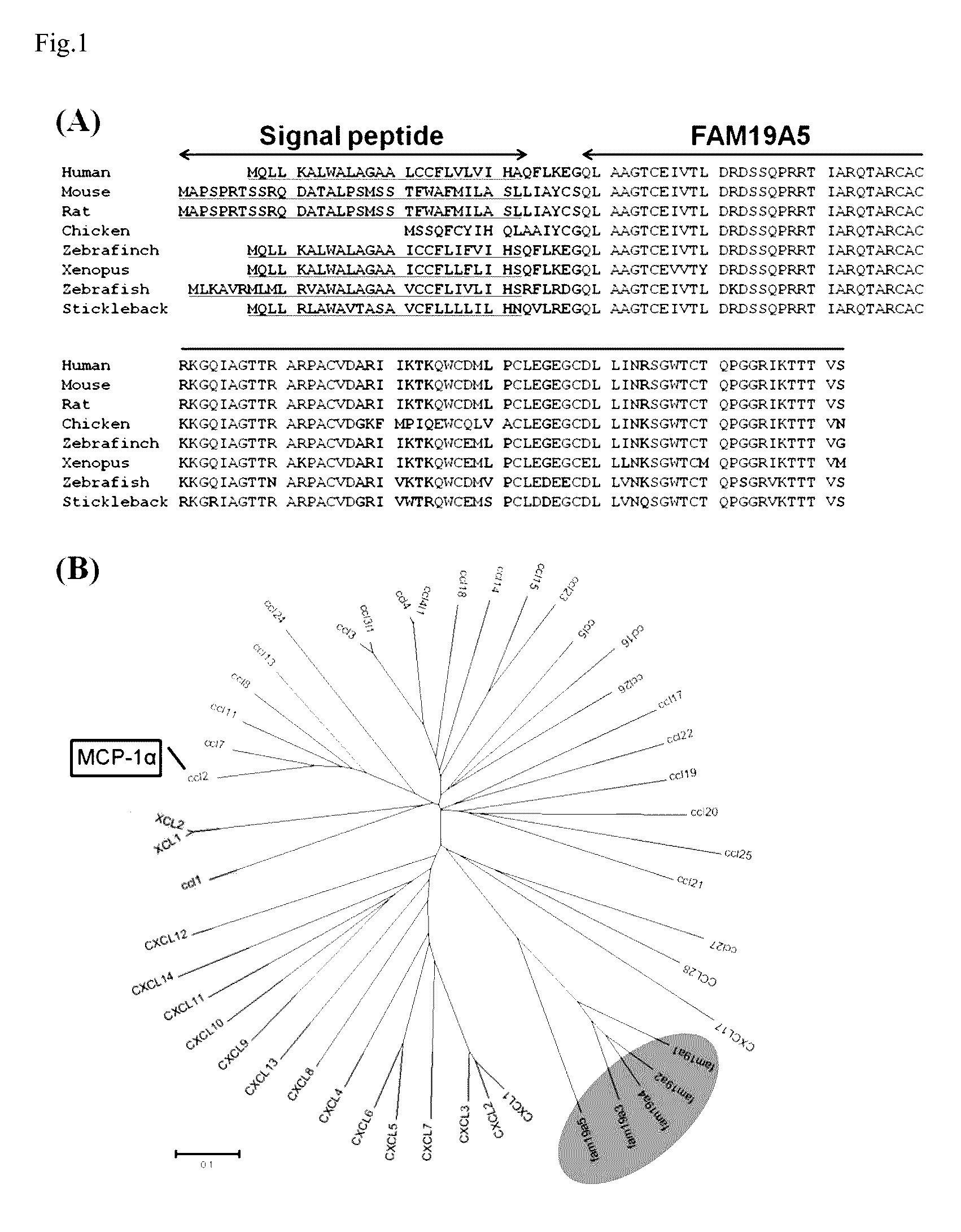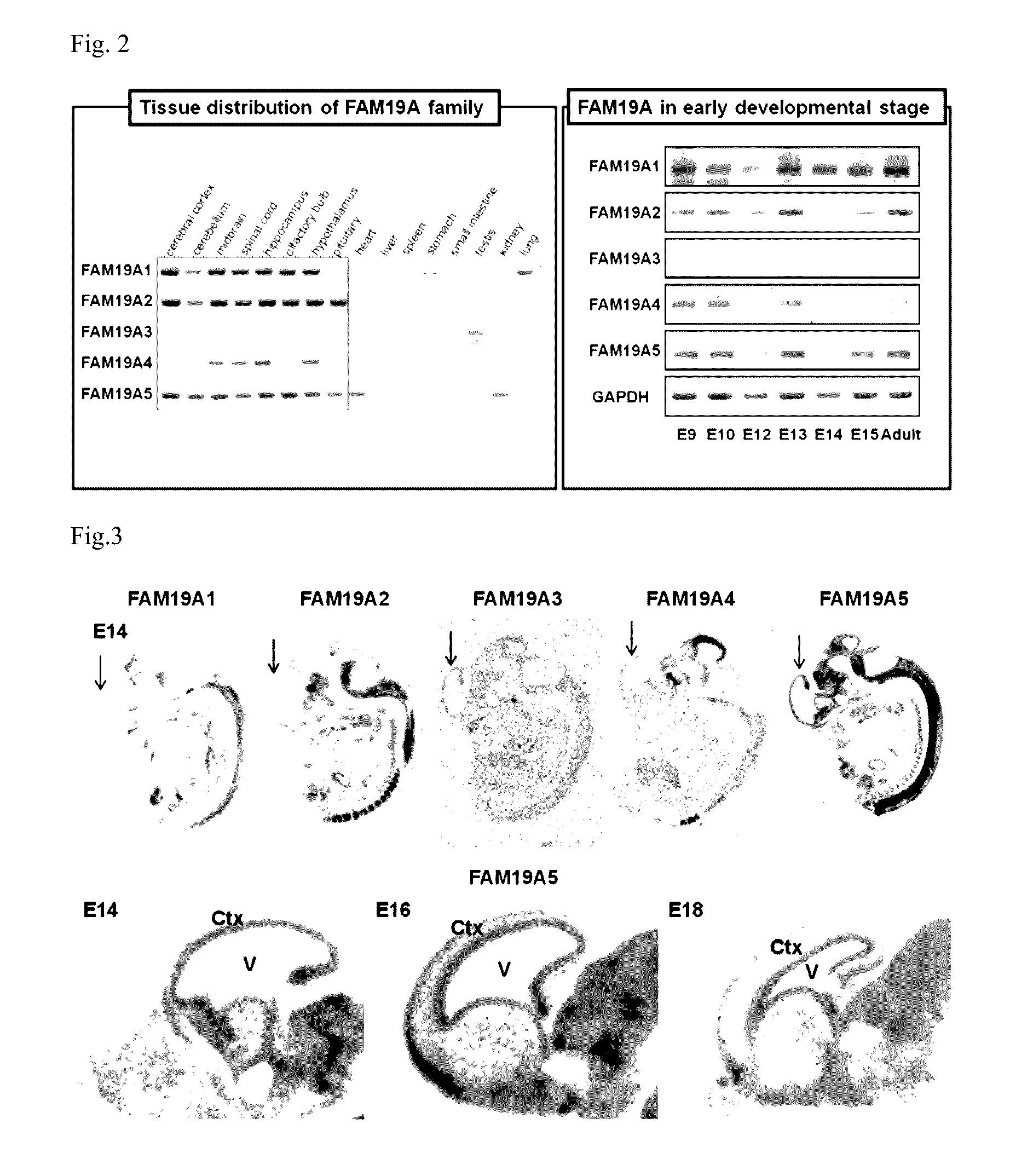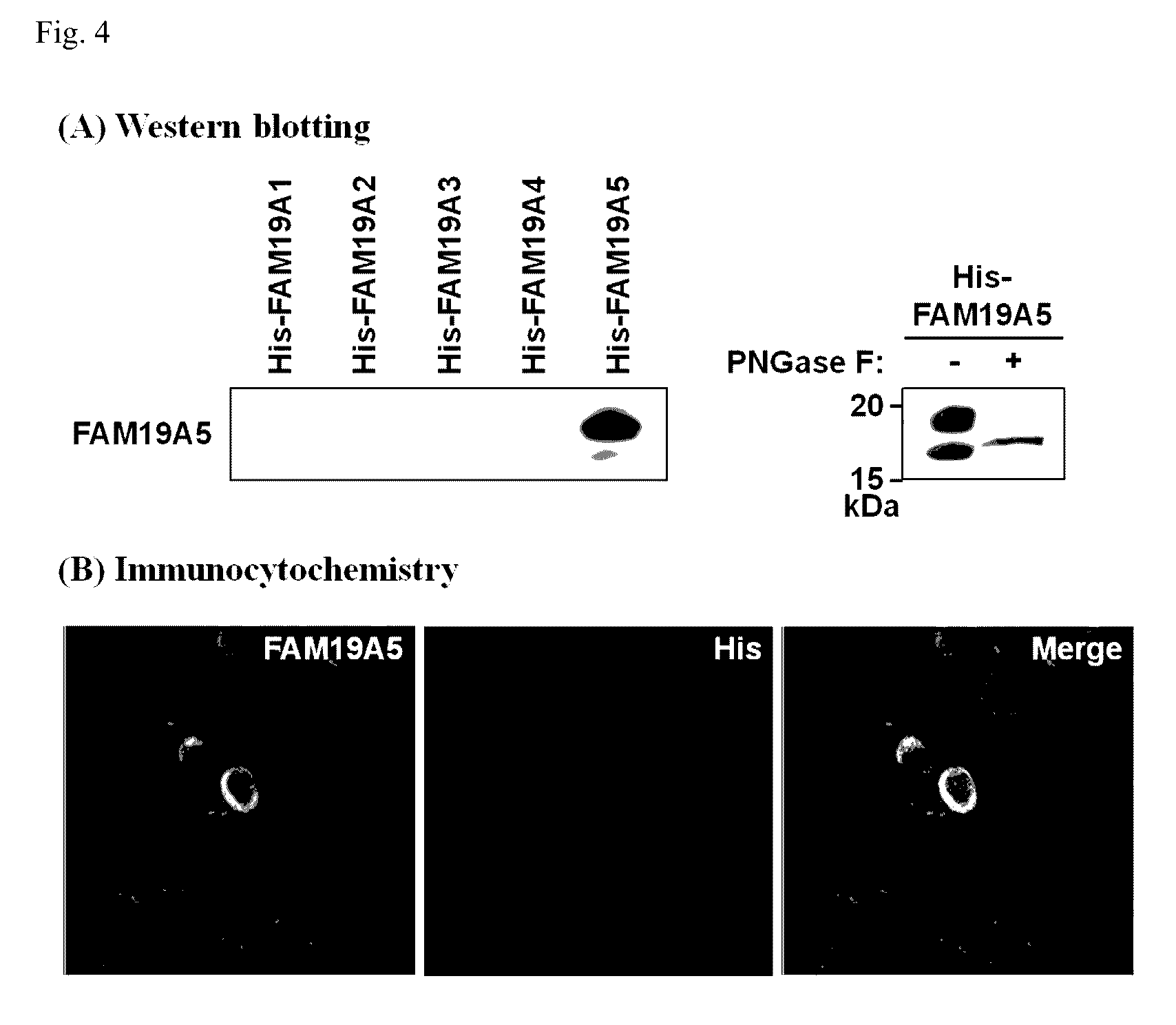Pharmaceutical use of FAM19A5 involved in regulating gliogenesis
a technology of gliogenesis and fam19a5, which is applied in the direction of immunoglobulins, drug compositions, peptides, etc., can solve problems such as degenerative brain diseases, and achieve diagnosis using such methods
- Summary
- Abstract
- Description
- Claims
- Application Information
AI Technical Summary
Benefits of technology
Problems solved by technology
Method used
Image
Examples
example 1
Finding New Secretory FAM19A5 Peptide Using Bioinformatics
[0154]The task of screening FAM19A5 genes was performed through a bioinformatics approach model. The inventors downloaded open reading frames (ORFs) of about 50,000 species of human genome genes from Ensembl (http: / / www.ensembl.org / index.html) and UniprotKB (http: / / www.uniprot.org / uniprot). In order to identify whether genes having possible physiological active peptides were among them, genes (secretome) of about 2,000 species that may be secreted from cells were screened using a Signal P3.0 program. Based on UniprotKB information, screened ORFs were analyzed. The result showed that ORFs of about 600 species were determined as genes (peptidome) encoding peptides. Among them, 560 species were genes of which functions had been already known, but the remaining 40 species were genes of which functions had not yet been discovered and encode new peptides.
[0155]FAM19A5 genes among them were found in various vertebrates including hum...
example 2
Verification of Expression of FAM19A5 Genes in Various Tissues by Reverse Transcription Polymerase Chain Reaction (RT-PCR)
[0156]Six-week old black male mice (C57BL / 6, mouse) were bought from Daehan Bio Link Co., Ltd. (http: / / www.dhbiolink.com). The bought mice were raised in a mouse cages in which adequate feed and water were given, a temperature of 20 to 24° C. was maintained, and a humidity of 40 to 70% was maintained. In addition, these wild-type mice were kept on a 12 / 12 Light / Dark cycle (light on at 8:00 am and light off at 8:00 pm). All experiments were designed to use the fewest number of mice, an anesthesia method was performed according to animal experiment ethics to minimize pain of the mice used in the experiment, and this was approved by Animal Care and Use Committee of the Korea University (KUIACUC-08).
[0157]All RNAs of each corresponding tissue from mice were extracted, and then complementary DNA (cDNA) was prepared using reverse transcriptase and a random hexamer. The...
example 3
Verification of Expression of FAM19A5 Genes for Each Developmental Stage by In Situ Hybridization
[0160]In order to determine expression patterns of FAM19A family genes in the cerebral cortex during the development process, in situ hybridization was used to compare amounts of mRNA. Wistar rats were managed in the same manner as the above method. The rats, on embryonic day 14 (E14) before birth, to 21 days after birth (postnatal day, P21) were sacrificed (decapitation) to obtain the brain from the skull. Since rats, before birth, have a larger body size than mice, which is a different type of experimental rat, rats were easier to handle in the experiment and used to compare FAM19A5 gene expression for each developmental stage.
[0161]The extracted brain was moved and frozen in a cold isopentane solution on dry ice. Frozen brain tissues were sliced (sectioned) at 12 μm, attached (Thaw-mounted) to a slide glass coated with TESPA (Sigma-Aldrich Co., Llc., St. Louis, Mo., USA), and fixed in...
PUM
| Property | Measurement | Unit |
|---|---|---|
| humidity | aaaaa | aaaaa |
| temperature | aaaaa | aaaaa |
| pH | aaaaa | aaaaa |
Abstract
Description
Claims
Application Information
 Login to View More
Login to View More - R&D
- Intellectual Property
- Life Sciences
- Materials
- Tech Scout
- Unparalleled Data Quality
- Higher Quality Content
- 60% Fewer Hallucinations
Browse by: Latest US Patents, China's latest patents, Technical Efficacy Thesaurus, Application Domain, Technology Topic, Popular Technical Reports.
© 2025 PatSnap. All rights reserved.Legal|Privacy policy|Modern Slavery Act Transparency Statement|Sitemap|About US| Contact US: help@patsnap.com



